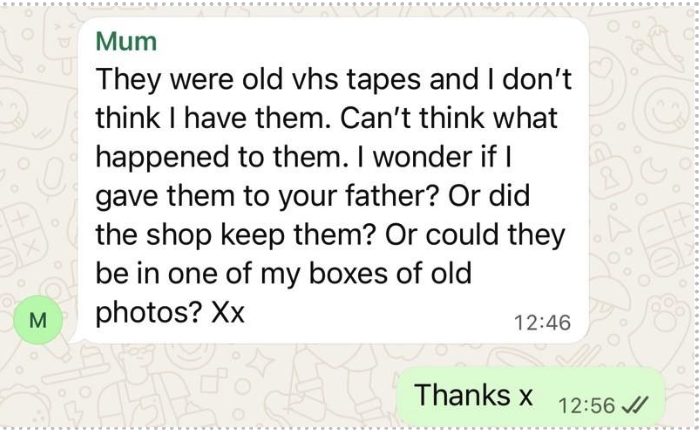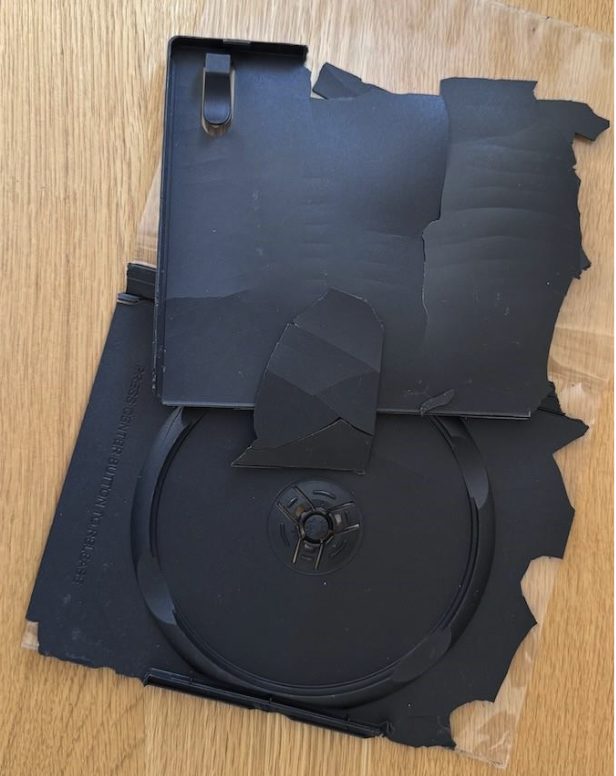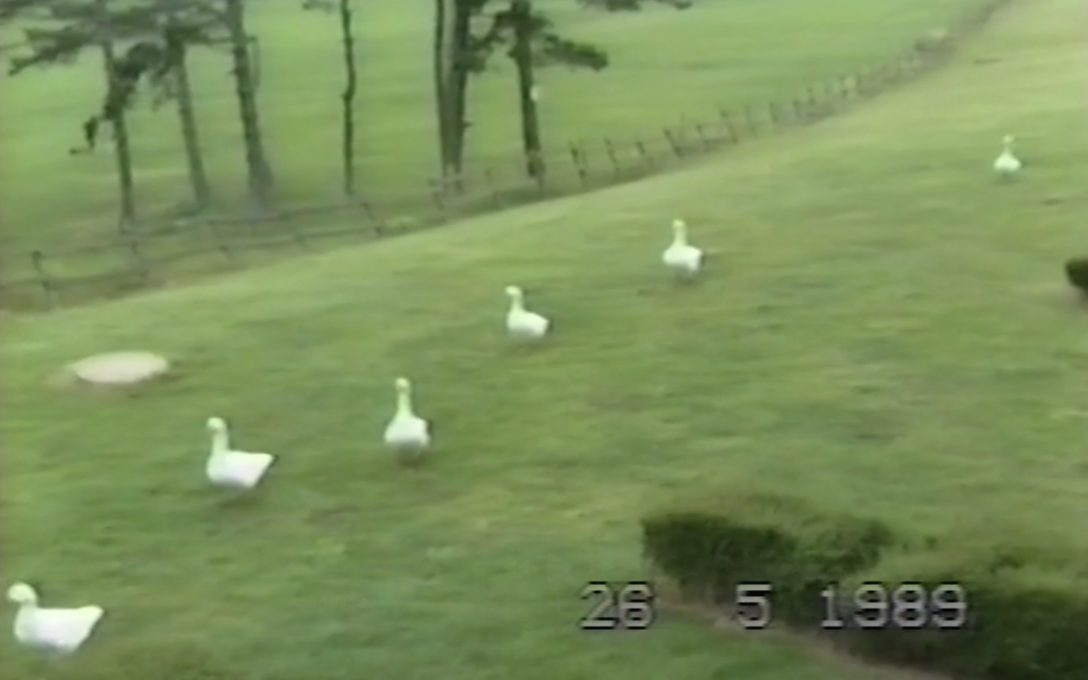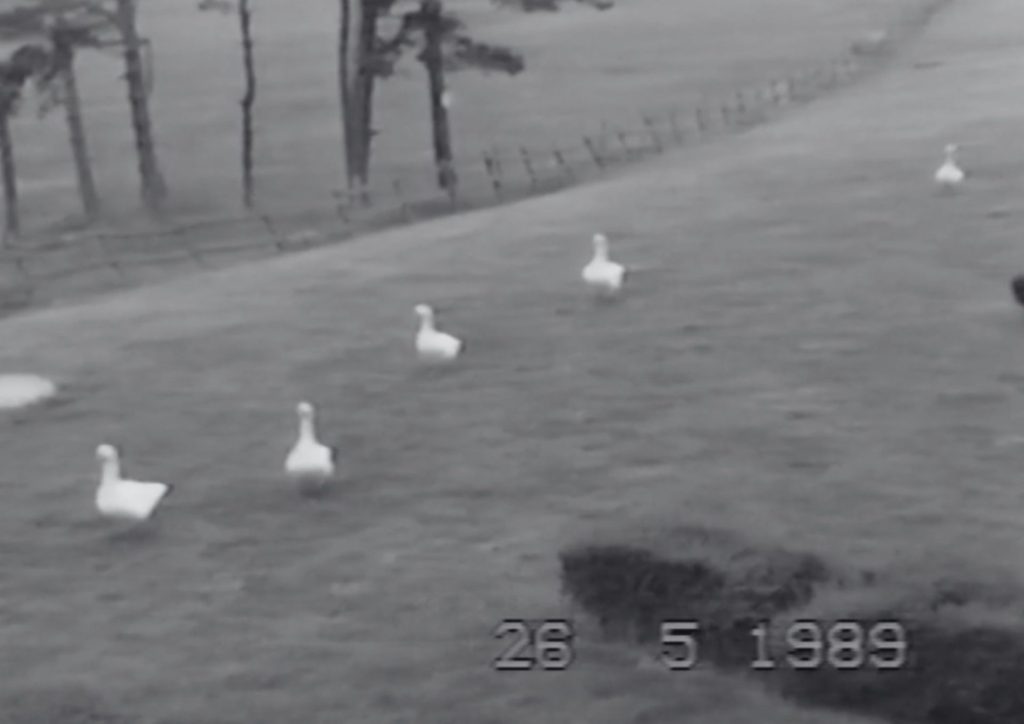A Personal Preservation Story
A personal preservation story
I recently embarked on my own personal digital preservation journey, working with some old family footage taken from the late 1980’s through to the mid 1990’s. This journey has highlighted some of the biggest challenges (albeit on a smaller scale) that organisations face when retaining digital content for decades.
My hope is that this post serves as a useful anecdote when talking more widely about the need for and challenge presented by successfully preserving the access and use of digital content.
Background
Back in the late 1980s through the 1990s my father purchased a camcorder to capture family moments as I grew up. These were captured on to VHS-C tapes and equated to roughly 15 hours’ worth of video. These were, initially put onto standard VHS tapes and as with many old family photos and mementos, were stored in boxes in various houses over the years.
Fast forward to 2012 and it was my mother who paid the princely sum of £200 to have these put onto DVD by a high street photographic services franchise. It’s worth noting for reference that the service is still offered by this chain (and others).
 Given that the average shelf life of a VHS tape can last anywhere between 10 to 30 years, it was a timely intervention by my mum to transfer the footage to DVD. We’ll explore this is more detail as we go through the story, and while DVD is almost certainly better than VHS, it does itself have limitations.
Given that the average shelf life of a VHS tape can last anywhere between 10 to 30 years, it was a timely intervention by my mum to transfer the footage to DVD. We’ll explore this is more detail as we go through the story, and while DVD is almost certainly better than VHS, it does itself have limitations.
Finally we’re also not entirely sure where the VHS tapes themselves are (see the message screenshotted!)
My preservation tale
Now, fast forwarding even further to 2025, after a recent house move, I was handed these DVDs with a broad remit of making them more accessible to the wider family.
On initial inspection there were a couple of issues; the first was the several of the DVD cases had broken up in storage (see picture) and secondly, I had 5 discs numbered 1-6, with number 5 missing. Fortunately all 5 that I did have were playable in my Blu-ray player connected to the TV (a Panasonic UB820) so were all watchable in my living room. Unfortunately, I’m not sure this fit the bill for family access.

My next step was to try and get the video footage off the DVDs, and onto a file sharing platform which could then be shared with the wider family. The first challenge to overcome here, was that neither me nor my wife’s laptop had disc drives.
A couple of online purchases later, I was several DVD cases, an external DVD player (a Hitachi-LG GP60)) and a USB C to USB 3.1 adapter richer (rough total cost £30). I then also downloaded an open-source encoder to rip the video footage off the DVDs (Handbrake), with a view up uploading to the cloud.
With each disc taking up to an hour to rip, the results were mixed…I was able to get all the footage off two of the discs, a partial amount from two and none from one. I will add I did also try a second recommended transcoder with no better results (MakeMKV). A bit more research into the subject showed that this is something that can happen if the discs themselves become damaged. Not surprising given the state of the cases.
What I was able to retrieve is, now saved to my cloud sharing platform of choice (iCloud), in an MP4 format, and shared with the family (read-only access to avoid any accidents!). Fortunately the family are Apple users so it’s made access nice and easy!
As precaution I also have them saved locally, and I plan to store them in a second file sharing platform (TBD), although this of course incurs further ongoing cost in addition to the first location.
And this is obviously just the start; I’ll need to keep an eye on files, make sure they remain free from any issues and reformat if required.
 Finally, if times allows, I want to also edit the footage. Each video currently is somewhere between 90 and 180 mins long and completely unedited. Although what is there is accessible, it’s not easily watched, and difficult to find specific individuals or events. This though will be a lengthy process and something which might have to wait for a rainy day over the winter. While I won’t share any of the family footage, my father did capture this nice procession in May 1989.
Finally, if times allows, I want to also edit the footage. Each video currently is somewhere between 90 and 180 mins long and completely unedited. Although what is there is accessible, it’s not easily watched, and difficult to find specific individuals or events. This though will be a lengthy process and something which might have to wait for a rainy day over the winter. While I won’t share any of the family footage, my father did capture this nice procession in May 1989.
Learnings from the journey
So why I have shared this somewhat meandering tale of my family footage. I think it’s a great illustration of how maintaining access and use of digital content over decades or longer is hard.
In this post, we’re talking about 5 (or originally 6) video files. It’s taken a lot of time, effort and some expenditure just to have them in a format that can be maintained and preserved, while also losing some of the content along the way. It was a very manual process with just one file type – the challenges for larger data collections with a broader range of file types only becomes exponentially more difficult.
Additionally it really highlights the limitations of keeping any digital content on physical media. These videos were stored on at least three different pieces of hardware over the years, and each posed varying risks to the files. The longer it is kept, the harder it becomes to access the data on the media as technology evolves. A simple example is how laptops and desktop computers sold today (and even over the last 5 years) rarely come with a disc drive. The takeaway here being that if you have anything stored on physical media (including external hard drives and USB sticks), make sure you save the content somewhere else as well.
Finally the sorting, labelling and categorising of digital content is just as important as preserving it. It’s great that we now have 10 hours’ worth of family footage, but if for example of want to see what footage we have of my grandmother, it’s currently a lengthy process to find everything we have. Again this becomes more challenging, the larger and more varied the collection is.
I hope this post has proved useful in highlighting not only why preservation is important, but that it requires expertise, knowledge and technology to achieve successfully at any scale. Now I’m off to try and see if I can recover the footage from those damaged DVDs!

Tom Lynam
Tom is the Marketing Director at Arkivum. He joined the business in January 2020 tasked with driving new business growth and building the brand into new sectors such as Pharmaceutical and Life Sciences. He has over 12 years’ experience in several diverse marketing leadership roles across technology and professional services organisations.
Get in touch
Interested in finding out more? Click the link below to arrange a time with one of our experienced team members.
Book a demo